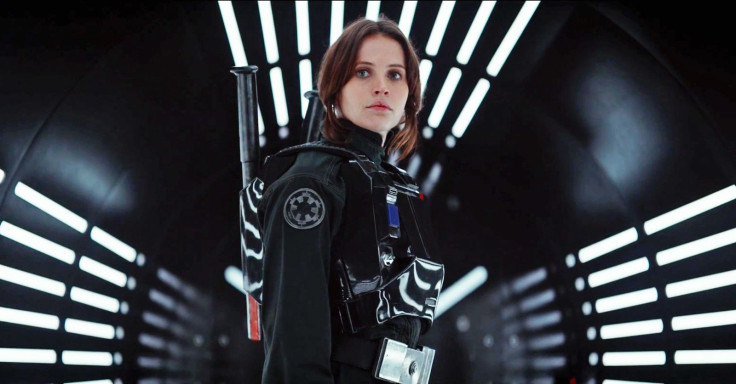Any Star Wars fan worth their salt knows that George Lucas based the film on the serial adventure stories from the thirties, Flash Gordon chief among them. Lucas then splashed in a little Akira Kurosawa and John Ford - primarily pulling from The Hidden Fortress and The Searchers respectively. David Lean’s Lawrence of Arabia also provided some visual guidance. He merged these references with Joseph Cambell’s book The Hero with a Thousand Faces, which focuses on storytelling in relation to myth and gave great popularity to the ‘hero’s journey’ that you 100% have seen youtube videos explaining.
The core thematic thrusts of the film were nothing new. It was a classic adventure tale of a young boy on a quest. The first three Star Wars films hewed close to these influences. To some extent the muddled prequel trilogy didn’t stray that far from the formula either. Star Wars films have always been fantasy adventure films in space. Until now.
Rogue One: A Star Wars Story, is the first Star Wars movie to look back and pull from a totally different genre, the classic war film. Instead of Lean’s Lawrence of Arabia , director Gareth Edwards was looking at another of his films, Bridge over the River Kwai. It’s less The Hidden Fortress and more Seven Samurai. Beyond finding it funny that Lucas and Edwards pull from different films of the same great directors of the 50s and 60s, I applaud Edwards for looking back at great films for inspiration. This was something that many of the New Hollywood directors did that is not seen as much now.
But we have to ask – is pulling from a great film enough? Lucas was an expert at pulling disparate pieces from many sources and melding them together without ever showing seam. I can know that R2D2 and C3PO are closely adapted from Kurosawa’s characters Tahei and Matashichi, but it never for a second makes those two droids feel less real. Because to successfully stich various filmic references together, if you don’t have a strong emotional core then all you’ve created is a sewn together corpse. Lucas was very careful about what elements he borrowed and what he left. While he may have made a more childish film than some of the films he borrowed from, he also created something that felt completely new, and captivated a generation.
Edward’s has achieved the opposite. He created a film that pulls machinations and plot devices from great war films of yesteryear but never replaces the heart. Throughout the runtime of Rogue One, I was fighting against myself to like it more. All the pieces were there: building a team, a dangerous single mission based story, a doomed last stand. So while my brain said, “No, no, this has everything you must love it,” my heart said, “I don’t care about any of these characters or anything they’re fighting for.”
A lot of this was in the edit – no time was given for any event to resonate. We were shoved into a whirlwind of events before we had a chance to get to know or care about our protagonist. Contrast this even to The Force Awakens . All we needed was a few minutes with Rey alone, eating weirdly, putting on helmets for no reason and we cared about her quest. It may also be telling that less than 24 hours after I saw the movie, I couldn’t remember the protagonist’s name – turns out it’s Jyn.
There are pieces of Rogue One I loved. The new planet types were for the most part super interesting and a great relief after the continued use of Hoth and Tatooine stand ins in Episode 7. Edwards also used his favorite Godzilla technique of panning between human action on the ground and the massive ships/monsters above. Like in Godzilla, it worked very well here. Ultimately, while I found myself liking these disparate pieces, the clear seams between them made it hard to love the film. I think the choice to make a Star Wars that’s a mission based war film instead of an adventure film was very bold. Edwards was also smart to build from the great films in the genre, but he failed when he thought that it was enough to pull from cool references. Lucas always knew you had to fill everything you borrow with new life. The result is a film that ultimately is less than the sum of its parts.














![[EG April 19] Best 'Stardew Valley' Mods That Will Change](https://d.player.one/en/full/226012/eg-april-19-best-stardew-valley-mods-that-will-change.png?w=380&h=275&f=955520b8313253ee3c39c791f6210f38)



